
So you want to bulk up. To do so you’re going to need to do two things: Workout and eat right. You can blast your muscles through varying workouts, tearing the muscle fiber down through the course of extensive workouts. Once torn down, you need to build the muscles back up. In order to rebuild your muscles bigger and stronger, you’re going to need protein and review the best foods for muscle gain.
This is one of the problems many people run into, especially those with blazing fast metabolisms. They don’t consume enough protein spread throughout the course of a day.
If you’re a skinny individual and struggle putting on muscle weight, it’s likely because you’re either not consuming enough protein or you’re burning through your protein intake, preventing your body from converting the protein over into muscle. Either way, you’re going to need to consume the best foods for muscle gain, better protein and in the right intervals.
Of course, you likely don’t want to put on too much fat mass either. That means you’ll need high protein, low-calorie foods.
There are plenty for you to choose from, you just need to know how to go about eating the right foods for muscle gain. That’s exactly where we come in. We’ll walk you through exactly what kinds of foods you need to include in your diet to put on serious muscle.
How Much Protein Do You Need To Build Muscle?
First, you need to determine how much protein you need to consume in order to build muscle. The exact number is up for debate as it really depends who you ask.
Some people will tell you to shoot for around .8 grams of protein per pound you weight. Others will tell you to double that amount.
Now, we’re going to tell you not to instantly shoot for 1.5 grams of protein per pound you weigh. This will force your body into protein overload and it won’t be able to process this amount. It’s just too much all at once.
Instead, you’ll need to slowly work your way up to it.
However, in reality, the right amount of protein will be different for you and the next person. That’s because your metabolic rate is different. Yes, having a fast metabolism is great. You’ll burn more calories and shed fat faster. However, this means you’ll also burn the protein you’re consuming faster, which means you’ll have less to build muscle with. Due to this, you’ll need to increase the amount of protein you need to consume.
So what should you do? Begin with around .8 grams of protein per pound you weigh and slowly increase this.
You probably don’t need to shoot for 1.5 grams per pound. You likely can top off at around one gram per pound and hover right around there to see gains. Often what’s more important than the amount of protein you take in is how you spread it out (Tufts University School of Medicine, 2016).

Spreading Out Your Protein
Your body can only take in so much of one thing at once.
Have you ever taken a multivitamin and then, a few hours later, peed an almost neon yellow color? At first, you may have freaked out a little, wondering why your urine came out so bright. It did this because the multivitamin did not break down slowly, but instead all at once.
When this happened your body could not absorb it all, which forced some of the vitamins and minerals out through the urine.
This is also why you need to look for a time-release multivitamin to make sure you’re getting the vitamins and minerals the supplement says you are getting.
So why do we bring this up regarding protein? Because the exact same thing is true.
You can’t sit down and consume 80 grams of protein at once and expect your body will be able to process all of it. That’s not how it works.
Your body can process a certain amount and, from there, everything else pushes through. Over time your body will become better adept at processing higher amounts of protein (which is why movie stars like The Rock can consume a larger amount of protein for meals, although the Rock is also huge and needs a large amount of protein to feed his muscles).
In reality, you need to shoot four around 20 to 30 grams of protein per meal, spacing out what you eat between four and five meals per day.
This way, you’re able to eat easily 100 to 150 grams of protein right off the bat (Penn State University, 2014).
Best Foods For Muscle Gain
Spreading out your protein like this will allow your body to better use the protein and not let it go to waste.
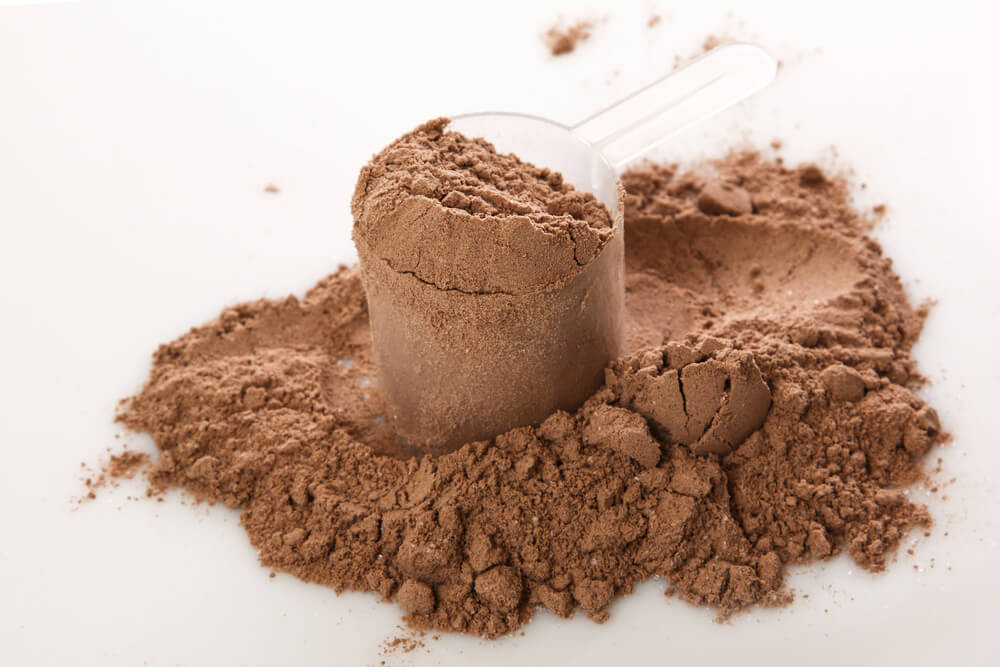
Protein Powder
Now, let’s look at the easiest way to consume protein.
There’s no better way than to down protein powder throughout the day. Depending on the kind of protein powder, if you go with whey protein, you can easily get around 30 grams of protein for around 200 calories (give or take).
Whey is an excellent protein as it is easy on the stomach and easy to digest.
If you’re a vegan you can use other kinds of protein powder, like soy protein powder or pea protein powder.
These proteins usually do not have as many grams of protein per calories, and these protein powders do not have the full complement of branch chain amino acids, which help muscles better utilize the protein, but it is an option when you’re avoiding anything with meat or dairy in it (Tufts University School of Medicine, 2016).
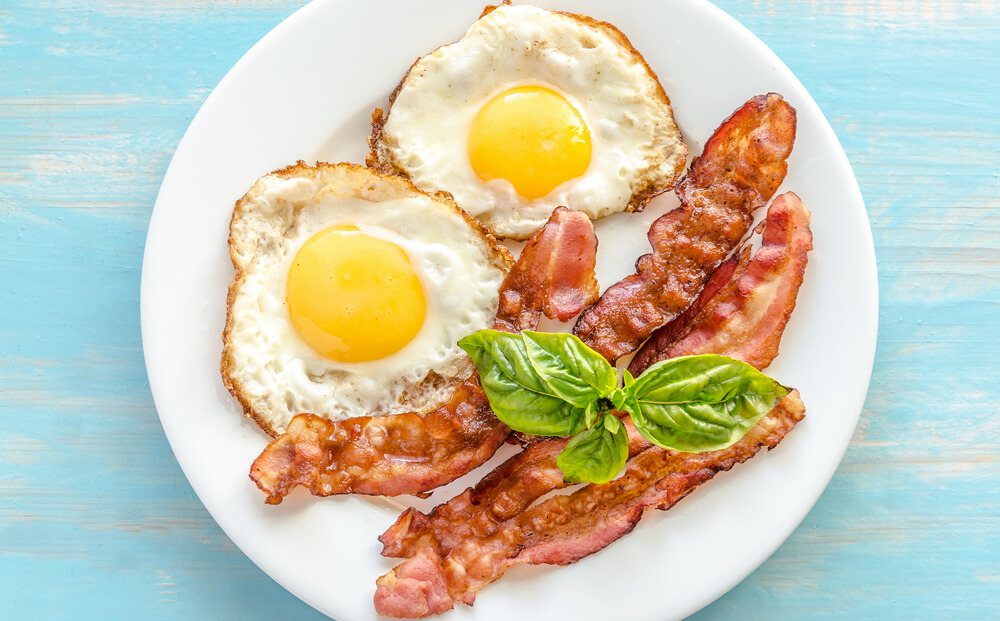
Eggs
Outside of supplements, you won’t find anything that has a better protein to calorie ratio than eggs.
Depending on the size of the egg you’re using you can expect anywhere from six to nine grams of protein per egg.
Better yet, if you want to cut most of the calories out while maintaining the majority of the protein, go with egg whites.
Yes, you’ll end up tossing half of the egg out (or you can purchase the egg white cartons next to the whole eggs if you don’t want to ditch egg yolks), but you’ll end up getting around six to seven grams of protein for about 40 calories a pop.
You can easily whip yourself up a breakfast egg-white omelet with five eggs that have 30 grams of protein and 200 calories, all while adding in a number of fresh veggies.
If you do decide to cook with egg whites, be careful. Because you’ve lost the cholesterol from the yolk it will burn faster.
To help avoid burning up your entire egg white spray down a cooking spray onto your frying pan. You can add some skim-milk to help as well.
Or, if you want to make a healthy breakfast sandwich, fill a microwave-safe container with egg whites and put it into the microwave. Cook it for about a minute. It’ll come out like a perfect white hockey puck, which you can put on a 100 percent whole grain biscuit.

Chicken
While we’re talking about the egg we might as well talk about the bird.
Chicken is an excellent food for building muscle.
It’s also cheap and easy to get at the local grocery store.
Don’t feel like cooking? Buy some of the already prepared chicken.
You can even go to KFC and buy the grilled chicken bucket (avoid the fried because you’re just adding unnecessary calories).
Don’t make a habit of buying KFC, even for grilled, as the seasoning blend has a large amount of sodium in it.
If you have any local Mexican grilled chicken joints in town these are better and usually cooked over a smoked grill for excellent flavor (Harvard, 2015).
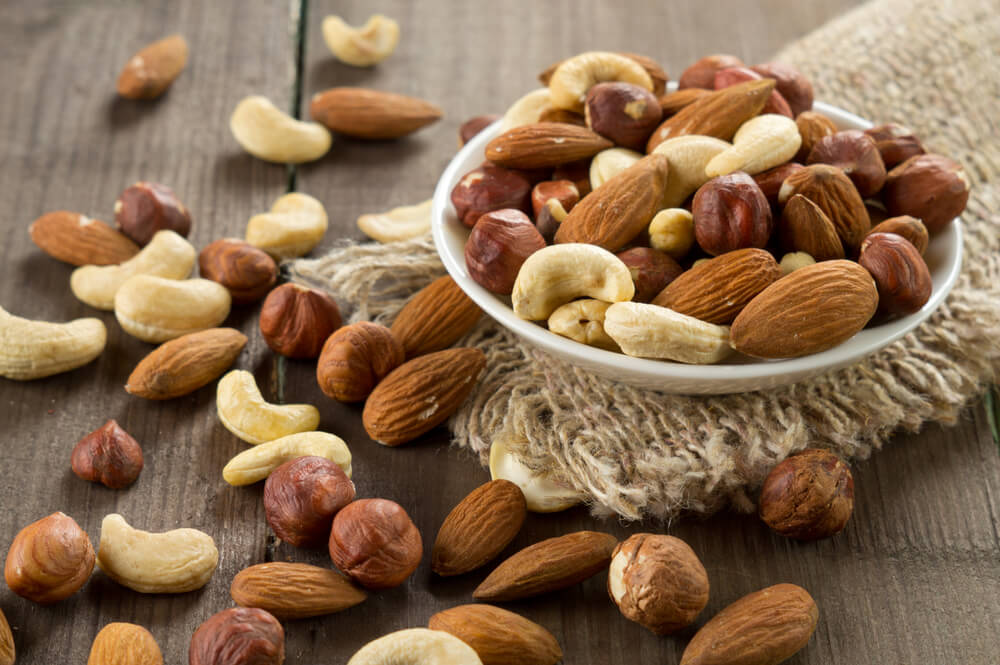
Nuts
It can be tricky to find a snack that works into your diet.
Most snack foods are packed with fats, sugar, and salt. None of these are all that great for your diet (although some fat is helpful as it will give you energy for the next workout at the gym).
Plus, there are good fats, which you’ll find in nuts.
There are a number of nuts to choose from.
If available, go with almonds.
Almonds are fantastic, packed with high levels of protein, and you can quickly grab 10 grams of protein with just a handful of almonds.
Whatever kind of nuts you reach for though, avoid anything that is salted.
Go for the unsalted option, otherwise, you’ll just retain water and consume far too much sodium (Penn State University, 2014).
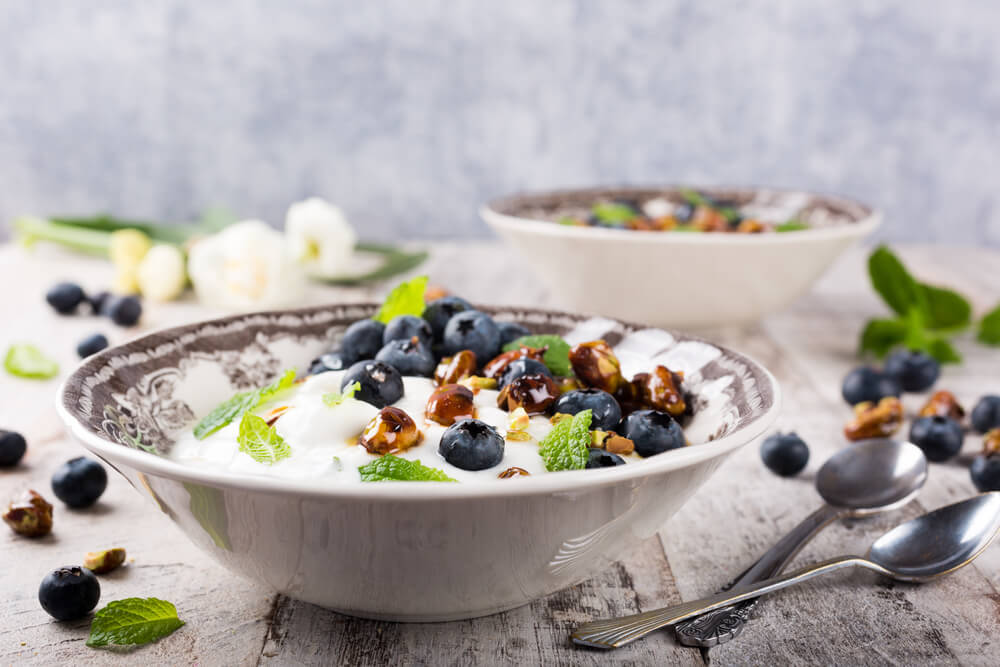
Cottage Cheese
When eating out, you’ll find many of the restaurant side dishes are loaded with items designed to trip you up and prevent you from seeing the kind of gains you’d like.
Most, except for cottage cheese.
Avoid the calorie-rich, saturated fat dripping fried options and go with cottage cheese.
This is a great addition to your diet as it’s slow digesting, which means it will keep you fuller, longer.
It’s also packed with protein for your muscles.
It also comes with its share of probiotics, which is good for your stomach.
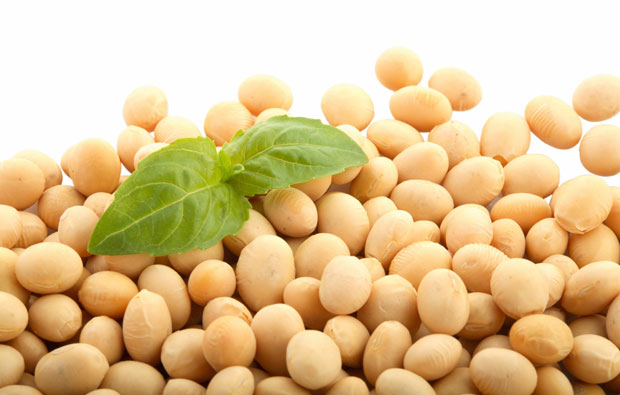
Beans
If you’re vegan, one of the most common questions you receive (or you will receive) is “how do you get enough protein?”
Most people have no idea how a vegan can intake enough protein, but in reality, it doesn’t need to be that tricky.
Most beans have a good amount of protein.
You can take a 1/4 cup of black beans and get nine grams or so of protein out of it.
In fact, most beans, such as pinto, kidney, black, white or others will give you between six and 10 grams of protein per 1/4 cup.
The beans are also low calorie. The quarter cup will have 90 or so calories. Which means if you ballpark around half a cup, you’ll get close to 20 calories for less than 200 calories.
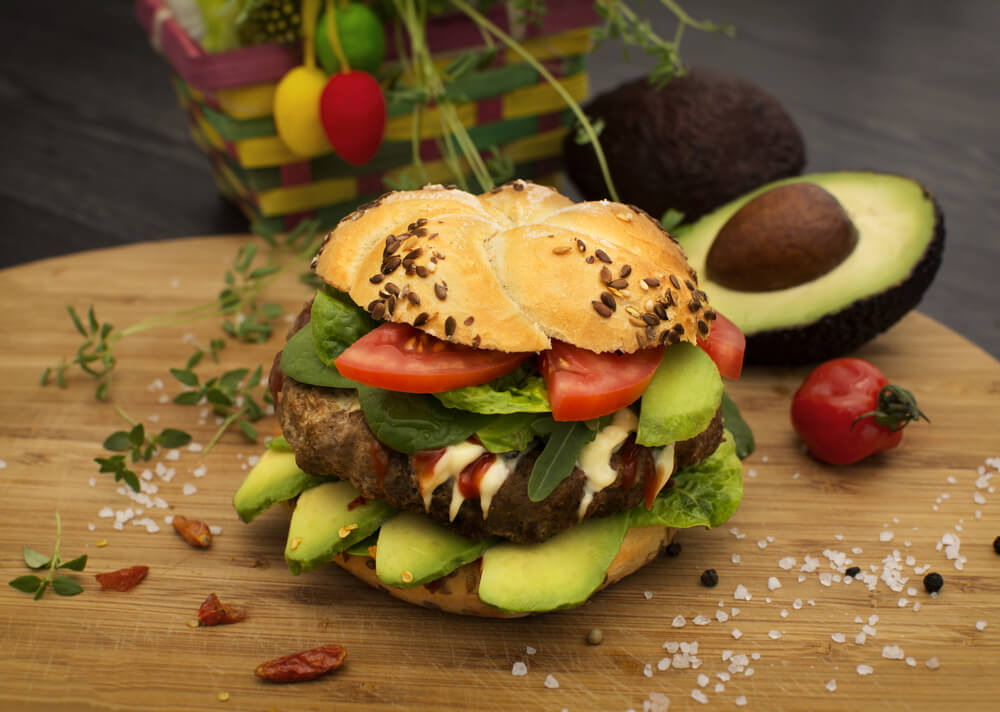
Lean Beef
Yes, beef has more calories per gram of protein than chicken or turkey or most seafood.
However, the major benefit with lean beef is the creatine that comes in it.
Creatine is naturally produced by your body and is used as a fast twitch muscle energy source (the energy source you use to explode up during a lift).
You will quickly use up the amount of creatine surplus your body has, and even if you’re consuming protein you may burn through this after a heavy workout as well.
Lean beef has creatine in it, so by consuming lean beef you’ll not only turbocharge your muscles with the protein intake but you’ll help pump out more future reps with the creatine as well.
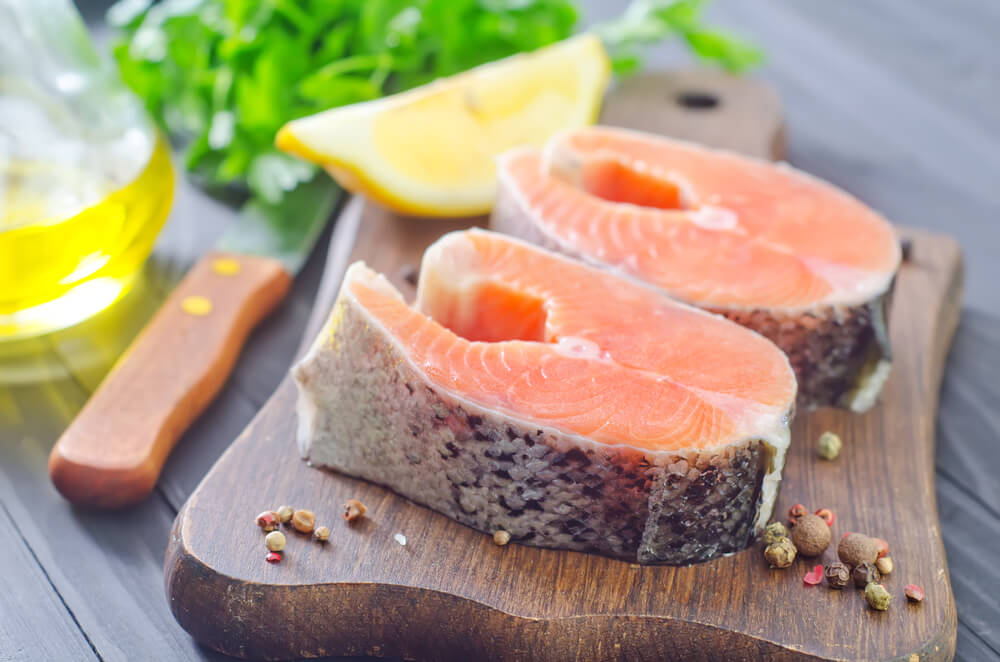
Fish
Fish is one of the best foods you can eat when it comes to your body.
Fish is low in calories and high in protein.
It’s low on carbs, and yet high in omega-3 fatty acids, which help with your muscular inflammation following a workout.
If you had to follow a “diet” that is best for your body, there are Scandinavian diets that are built around seafood.
The only downside is fish based diets tend to be expensive. However, if you can sprinkle in fish a few times a week you’ll net exceptional gains while cutting out a good amount of calories while you’re at it (Penn State University, 2014).
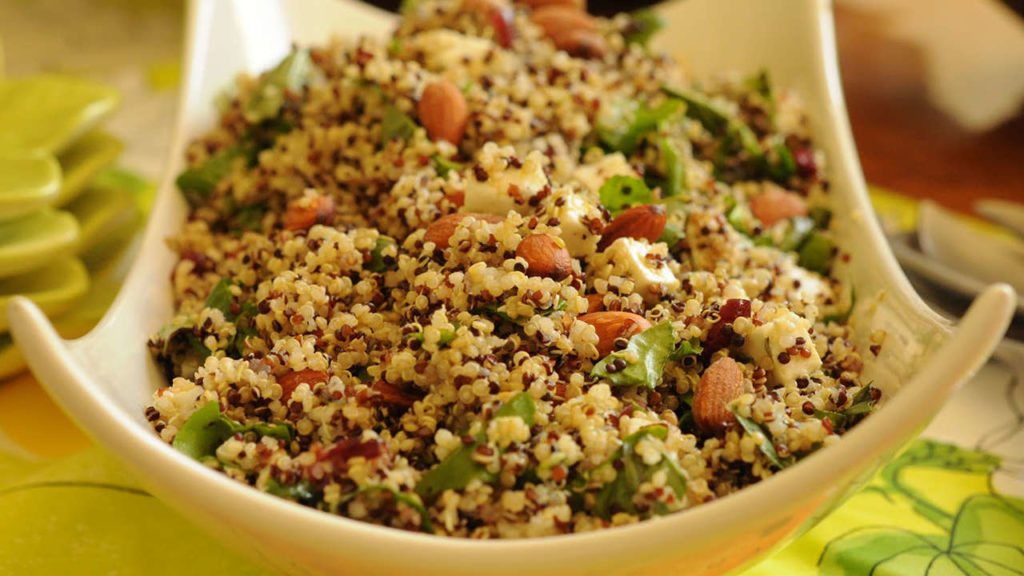
Quinoa
This is a solid addition to your diet and will help boost your protein intake without relying completely on meat.
It’s a great dish to cook with as you can use it as a side, or you can use it with beans and make a high protein soup with it.
You can even get creative and add some egg whites to the soup to make a protein-packed egg-drop soup that will knock out any winter cold while giving you a substantial blast of protein (Harvard, 2015).
In Conclusion
There are plenty of food options out there for you to put on muscle.
Now, it is always easier to grow muscle when you’re eating meat, but if you’re vegan there are options available. You’ll just need to be mindful of the protein numbers and make sure you’re eating enough throughout the course of the day.
As long as you’re watching what you eat and spacing out your protein intake, you’ll begin to see sizable gains right along with your time in the gym.
-Terry Asher
Terry Asher
Latest posts by Terry Asher (see all)
- Better Family – Product Review Liquid Daily 2 oz - Dec 16, 2024
- Post-Workout Recovery: The Key to Optimal Performance - Nov 25, 2024
- Pre-Workout Supplements – Everything You Need To Know - Nov 18, 2024










[…] Read more Here | 2018-10-05 23:51:31 Image credit: source Facebook Twitter Google+ Pinterest […]
[…] Source link […]
[…] post What Are The Best Foods For Muscle Gain? appeared first on Gym […]
[…] post What Are The Best Foods For Muscle Gain? appeared first on Gym […]
[…] Read The Entire Article By Terry Asher Here. […]
Supplements are not the only way to build muscles, we can try foods too. Thanks for sharing this info with us
[…] Read The Entire Article By Terry Asher Here. […]
[…] post What Are The Best Foods For Muscle Gain? appeared first on Gym […]
[…] considering egg white protein powder you need to consider all the options and then decide which is best for you (there’s no […]
[…] considering egg white protein powder you need to consider all the options and then decide which is best for you (there’s no […]
[…] considering egg white protein powder you need to consider all the options and then decide which is best for you (there’s no […]
[…] related to low testosterone levels. Growing up, testosterone plays a vital role in developing and maintaining muscle mass in men but as the hormone level depletes, so does the muscle […]
[…] related to low testosterone levels. Growing up, testosterone plays a vital role in developing and maintaining muscle mass in men but as the hormone level depletes, so does the muscle […]
[…] related to low testosterone levels. Growing up, testosterone plays a vital role in developing and maintaining muscle mass in men but as the hormone level depletes, so does the muscle […]
[…] related to low testosterone levels. Growing up, testosterone plays a vital role in developing and maintaining muscle mass in men but as the hormone level depletes, so does the muscle […]
[…] related to low testosterone levels. Growing up, testosterone plays a vital role in developing and maintaining muscle mass in men but as the hormone level depletes, so does the muscle […]
[…] related to low testosterone levels. Growing up, testosterone plays a vital role in developing and maintaining muscle mass in men but as the hormone level depletes, so does the muscle […]
[…] related to low testosterone levels. As it grows, testosterone plays a vital role in development and maintenance of muscle mass in men, but as the hormone level is depleted, so is muscle […]
I recently started bulking up. Thanks for sharing these article, this is very helpful.